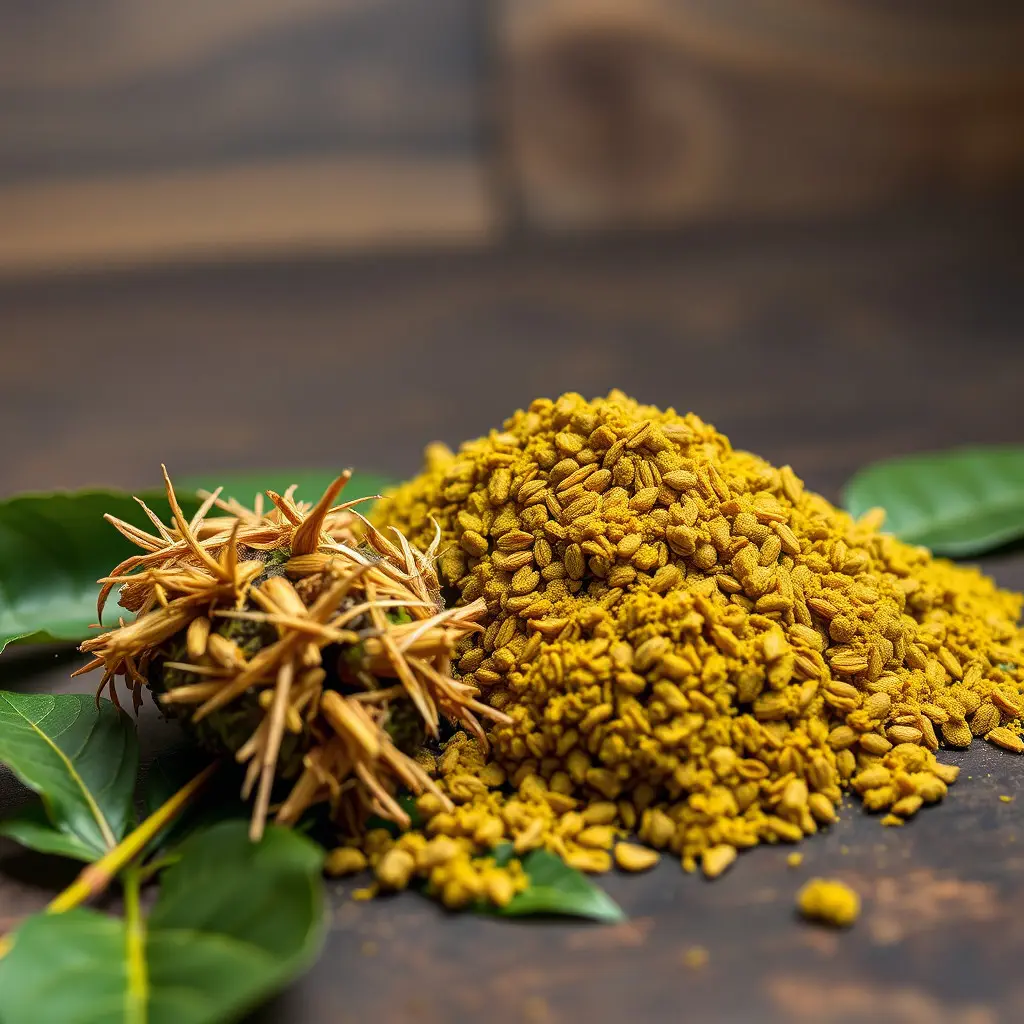Indiana's stance on kratom as a post-workout supplement for athletes is governed by a patchwork of state and county regulations. The natural compound derived from Mitragyna speciosa, commonly known as kratom, has gained popularity in fitness circles due to its potential benefits for muscle recovery, with active alkaloids like mitragynine and 7-hydroxymitragynine purported to influence pain, mood, and energy. However, users must navigate Indiana's complex legal framework surrounding kratom, as it is subject to varying degrees of restriction across different counties within the state. Given these dynamics, it's essential for athletes and wellness enthusiasts to stay informed on local laws and consult with healthcare professionals for safe and effective integration of kratom into their recovery routines. The 2019 Indiana legislation categorizes kratom distinctly from synthetic substances and imposes age restrictions, emphasizing the responsible use of this supplement within a comprehensive fitness and wellness regimen. Athletes in Indiana considering kratom should be aware of its Schedule I controlled substance status under state law and the importance of understanding the different strains' effects to ensure they are using the product safely and legally for their post-workout recovery.
explore the intricate relationship between kratom, a naturally occurring mitragynine-rich plant, and its role in post-workout recovery, as discussed within the context of Indiana’s legal landscape. This article delves into the nuances of integrating kratom into training recovery strategies, offering guidance for athletes and fitness enthusiasts in Indiana. We will navigate the complexities surrounding the legal use of kratom, highlighting safety considerations and effective strategies for athletic recovery while adhering to state regulations. Join us as we unravel the potential benefits and risks associated with kratom, ensuring a comprehensive understanding of its place in the realm of fitness and well-being within Indiana’s boundaries.
- Understanding Kratom's Role in Post-Workout Recovery within Indiana's Legal Framework
- Crafting Effective Training Recovery Strategies with Kratom Use in Indiana
- Navigating the Legalities and Safety Considerations of Kratom for Athletic Recovery in Indiana
Understanding Kratom's Role in Post-Workout Recovery within Indiana's Legal Framework

In Indiana, the conversation surrounding the use of kratom for post-workout recovery is situated within a legal framework that requires careful consideration. Kratom, derived from the leaves of Mitragyna speciosa, has gained attention in fitness and wellness circles for its potential role in supporting recovery after strenuous exercise. In Indiana, the status of kratom is regulated by state legislation, which classifies it as a controlled substance within certain counties but legal in others. This variability necessitates that athletes and individuals interested in using kratom for its purported benefits must be well-informed about local laws before incorporating it into their recovery routines. Alkaloids present in kratom, such as mitragynine and 7-hydroxymitragynine, are believed to influence pain perception, mood, and energy levels, which can contribute to a more efficient recovery process post-workout. Users in Indiana who opt for kratom should be aware of the dosage and the specific strains that may best align with their fitness goals and recovery needs, always prioritizing safety and legality. It’s crucial for individuals to stay updated on the evolving legal landscape of kratom in Indiana, as regulations can change and impact the availability and legality of its use. For those considering kratom as part of their post-workout recovery strategy, it’s essential to consult with healthcare providers and adhere to recommended guidelines to ensure a balanced and safe approach to wellness.
Crafting Effective Training Recovery Strategies with Kratom Use in Indiana

In Indiana, where physical activity and fitness regimens are a staple for many, crafting effective training recovery strategies is paramount for athletes and fitness enthusiasts alike. Kratom, a botanical supplement derived from the leaves of Mitragyna speciosa, has gained attention within the state’s wellness communities for its potential role in post-exercise recovery. Indiana kratom users often turn to this substance as part of their holistic approach to muscle soreness and fatigue management. The alkaloids found in kratom, such as 7-hydroxymitragynine and mitraphylline, are believed to interact with the body’s opioid receptors, providing pain relief and promoting a state of relaxation that can enhance recovery. This effect is particularly beneficial when combined with other recovery modalities like adequate hydration, nutritious meals, and proper sleep.
When integrating kratom into training recovery strategies in Indiana, it’s crucial to adhere to the state’s regulatory framework surrounding its use. The 2019 Indiana kratom legislation, which specifically exempts kratom from the definition of synthetic drugs and places restrictions on its sale to minors, sets guidelines that users must follow. This legislative approach underscores the importance of responsible use within the context of a comprehensive recovery plan. Users should also be aware of the different strains of kratom—red, green, and white vein varieties—as they may offer varying effects on energy levels and mood, which can further influence recovery dynamics. By combining kratom with other evidence-based recovery techniques, Indiana’s fitness community can enhance their performance and well-being, ultimately leading to safer and more effective training sessions.
Navigating the Legalities and Safety Considerations of Kratom for Athletic Recovery in Indiana

When considering the integration of kratom into training recovery strategies for athletes in Indiana, it’s crucial to first navigate the complex legal landscape surrounding its use. As of the knowledge cutoff in 2023, kratom is a controlled substance in Indiana, classified under Schedule I of the state’s controlled substances act. This designation restricts its sale and possession, necessitating a clear understanding of local laws to ensure compliance. Athletes looking to utilize kratom for recovery must be aware that its legal status may change, and they should always verify the current legislation before use.
Safety considerations are paramount when exploring kratom as part of an athletic recovery regimen in Indiana. Kratom derivatives, such as mitragynine and 7-hydroxymitragynine, can have potent effects on the body, influencing pain perception, mood, and energy levels. These properties make it an attractive option for some athletes seeking natural ways to aid recovery. However, potential side effects, including dependence, should be carefully weighed against its benefits. It’s advisable for athletes to consult with healthcare professionals, especially given the interplay between kratom and other medications or supplements they may be taking. Additionally, dosage plays a significant role in mitigating risks; adherence to recommended guidelines is essential for safe use. Athletes in Indiana interested in incorporating kratom into their recovery strategies should prioritize informed decision-making and seek personalized guidance from qualified health practitioners familiar with the nuances of this unique compound.
In conclusion, the role of kratom as a component of post-workout recovery strategies for athletes in Indiana is multifaceted and subject to stringent legal and safety considerations. As outlined, understanding kratom’s effects within the state’s legal boundaries is paramount for safe and effective use. By crafting tailored recovery strategies that include kratom, athletes may potentially enhance their recovery process, provided they adhere to Indiana’s regulations and exercise caution. It is imperative for both athletes and health professionals in Indiana to stay informed on the evolving status of kratom and its implications for athletic training and recovery. As such, this article serves as a guide to navigate the complexities surrounding kratom use, emphasizing the importance of responsible consumption and informed decision-making within the state’s framework.






